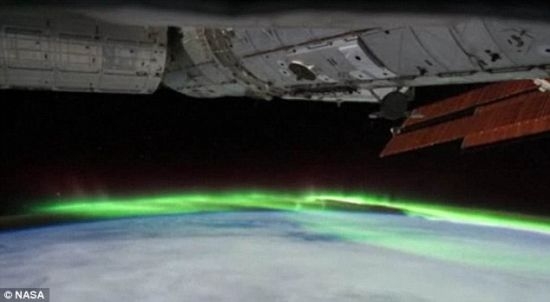国际空间站在澳洲上空拍摄到精美南极光
by geekzhang on 2011-09-22 11:07:28
北京时间9月22日消息,宇航员公布了另一段令人叹为观止的录像,它显示的是9月11日空间站从东澳大利亚上空经过时,看到的南极光。这些蔚为壮观的光影展在北极和南极附近更加常见。
太阳释放出来的带电粒子流(即已知的太阳风)与地球磁场发生互动,导致氧和氮原子(形成我们呼吸的空气的主要成分)在上层大气层发生撞击时,就会形成这种精美绝伦的视觉盛宴。这张精美的极光图片是在地磁暴发生期间拍摄的。这场地磁暴可能是由太阳发出的日冕物质抛射(这是太阳喷射出粒子的现象,经常伴有黑子)引发的。太阳发出的高能粒子与地球大气层里的氧原子相撞在一起时,它们会以光粒子(或称光子)的形式释放出能量。这些极光一般会发出波长0.558微米的光,此时人眼看到的是绿光。
